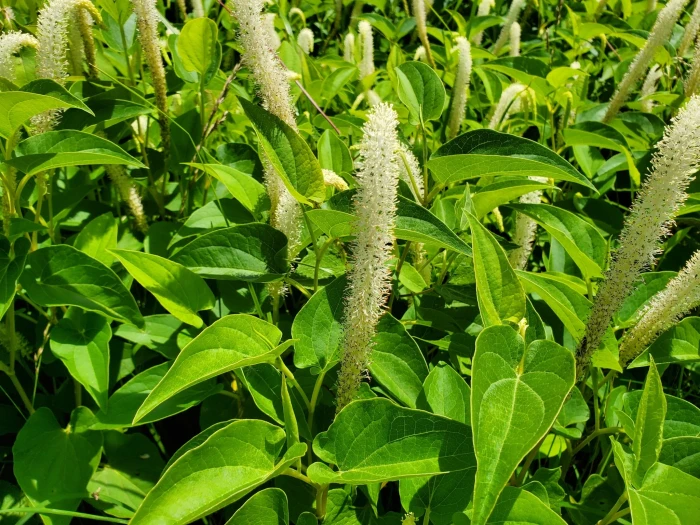Lizard’s Tail
(Saururus cernuus)
Lizard’s Tail (Saururus cernuus)
/
/

Luke Wildfire
CC BY 4.0
Image By:
Luke Wildfire
Recorded By:
Copyright:
CC BY 4.0
Copyright Notice:
Photo by: Luke Wildfire | License Type: CC BY 4.0 | License URL: http://creativecommons.org/licenses/by/4.0/ | Rights Holder: Luke Wildfire | Publisher: iNaturalist | Date Created: 2021-06-25T13:46:19-07:00 |









































































Estimated Native Range
Climate Requirements for Sebastian, Florida
| This Plant | Your Site | Plant Suitability for Your Location | ||
|---|---|---|---|---|
| • Precipitation | 10" - 74" | 49" | Aquatic | Aquatic |
| • High Temp. | 64°F - 105°F | 91°F | Your summer temperatures are normal for this plant. | Excellent |
| • Low Temp. | -13°F - 63°F | 51°F | Your winter temperatures are normal for this plant | Excellent |
This plant should grow well at your location with about N inches per year (Y minutes per month) of irrigation.
Summary
Saururus cernuus, commonly known as Lizard’s Tail, is a herbaceous perennial native to swampy areas, marshes, and wet woodlands of Eastern North America. It typically grows 2 to 3 feet in height with a spread of 1 to 2 feet. The plant features a distinctive inflorescence that is 6 to 8 inches long, with numerous small, fragrant white flowers that bloom from May to early August. These flowers are arranged in a drooping, tail-like shape, which, along with the browning of the flowers post-maturity, contributes to the common name. The foliage is also notable, with heart-shaped, arrow-shaped, or lance-shaped leaves that emit a citrus or sassafras aroma when crushed.
Lizard’s Tail is valued for its wildlife benefits, as it provides habitat and food for various species. It is also used in wetland restoration projects and is available from native plant nurseries for this purpose. In the garden, it is often used in water gardens, rain gardens, or as a naturalizing plant in damp areas. It thrives in full sun to part shade and requires aquatic conditions or consistently moist soil with slow or standing drainage. While it is not prone to serious pests or diseases, it can spread aggressively in ideal wet conditions, which should be considered when planting.CC BY-SA 4.0
Lizard’s Tail is valued for its wildlife benefits, as it provides habitat and food for various species. It is also used in wetland restoration projects and is available from native plant nurseries for this purpose. In the garden, it is often used in water gardens, rain gardens, or as a naturalizing plant in damp areas. It thrives in full sun to part shade and requires aquatic conditions or consistently moist soil with slow or standing drainage. While it is not prone to serious pests or diseases, it can spread aggressively in ideal wet conditions, which should be considered when planting.CC BY-SA 4.0
Plant Description
- Plant Type: Herb
- Height: 1-4 feet
- Width: 1-2 feet
- Growth Rate: Moderate
- Flower Color: White
- Flowering Season: Summer
- Leaf Retention: Deciduous
Growth Requirements
- Sun: Full Sun, Part Shade
- Water: Aquatic, High
- Drainage: Slow, Standing
Common Uses
Bee Garden, Bird Garden, Butterfly Garden, Deer Resistant, Fragrant, Low Maintenance, Potted Plant, Showy Flowers, Water Garden
Natural Habitat
Swampy areas, marshes, and wet woodlands of Eastern North America
Other Names
Common Names: Lizard’s-Tail, Swamp Lily, Water-Dragon, Water Dragon, Lézardelle Penchée, Saurure Penché, Saurure Penchée, Ödlesvans
Scientific Names: Saururus cernuus, Saururus lucidus, Mattuschkia aquatica, Neobiondia silvestrii, Saururus cernuus f. submersus
GBIF Accepted Name: Saururus cernuus L.